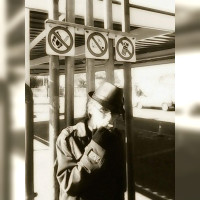Soap operas may remind you of the highly-successful Days of Our Lives, The Young and The Restless, and all their likes, but their success doesn’t translate well to writing. In fact, soap-opera writing is very likely to turn off your readers. Here’s how to spot it and cut it down to a minimum.
Soap operas are melodramatic and over-driven.
That’s part of why they work. “She married her own brother? Never! How could she! Gasp! Splutter!” is the kind of overblown reaction you would come to expect from a soap opera scene, and we’d be kind to say it’s the kind of thing that should generally stay there. In general, soap opera dialogue is dramatic, quick-paced and not how people talk at all. Note the dramatic, weighty pauses in-between lines, or the pause while the camera pans over the actor’s shocked face. Many authors attempt this drama unnecessarily in their fiction, often with words like “suddenly”, “shockingly” and “angrily”.
Scene changes for TV and film are not the same as for books.
Take a moment and read an excerpt from a film or TV script; note the way the scene is set up (SCENE 1, EXT. GARDEN) and changes from scene-to scene. Naturally, scripts are less descriptive and more directive. Scenes jump with a fade-in instead of through descriptive writing – and scene changes on a film set or stage literally involve wardrobe changes and a change of set. Writing, you’ll notice, does not – you’ve got to show instead of telling without the cinematographer’s luxury of showing. Language is your lens, your screen, pretty much everything.
Time progression in soap operas is heavily skewed.
This is because real-time fiction TV shows would be boring: Would you like to watch a season of Bold and the Beautiful where characters are shown doing their shopping, going to the bathroom and working in the garden for three-hour stints? Similarly, in the characters often grow up too fast (or don’t age at all) – this makes TV storylines easier to compose, and it makes working with (for example) child actors a little easier.
Dream sequences and flashbacks are a useful storytelling tool.
But don’t push it. Soap operas often bring in the flashback or dream sequence to heighten the tension or explain something for people who missed an episode, but unless you happen to be writing episodic fiction (say, a serial for Reader’s Digest) this is seldom necessary. Dream sequences in where everything turned out to be a dream are far, far too overused and should be banned to Plot Purgatory. Flashbacks should be utilized where necessary, but always note your return to the present time, and find something more creative than having something “snap” your character “back to reality”.
Soap opera narration is as overdone as everything else.
Your job as a writer is to describe the scene to the reader using descriptive language. You don’t want your story or scene to drown in the frills, and you don’t want to include so much back-story that the reader is left wondering where the plot is hiding in all of it. This is why several drafts are important to an author – when reading it at a later point, you’ll know where you overdid it, you’ll be able to tell where you under-did it; if not, call in the help of a beta-reader or professional editor to help you get a handle on your story again.
Soap opera characters rarely undergo major changes or growth.
When they do, it’s a much hyped-up part of the plot deserving of at least fourteen episodes alluding to this change, then twelve actually seeing the change take place. I’ve seen soap opera characters get over the death of a partner (which, yes, had been stretched over about a year of dying very slowly…) within a total two episodes: About six months later, a brief mention was made about their dead husband, and that was it – for the rest of the show.
Too many cliffhangers spoil the climb to the peak.
We love cliffhangers as much as the next reader – in fact, cliffhangers can be a lot of fun – but it’s not necessary to end every scene change or chapter on a cliffhanger as you would see on-screen where soap operas and TV shows thrive on tension. (I remember that RL Stine, the author of the Goosebumps and Fear Street series’ employed these kinds of cliffhangers to my young mind’s delight.) Another reason for these cliffhangers in film fiction (even reality shows) is to keep people watching in-between ad-breaks.
Don’t state the obvious.
In terms of character traits, in terms of plot, even in terms of a simple sentence like “the water was blue”. What shade of blue was the water? Was it naturally blue or dyed blue by other means? There are a thousand questions that could come from a sentence as simple as that – something that, at first glance, would seem extremely obvious.
Blunt endings spoil the entire journey, too.
Endings are meant to have an impact, to leave the reader either wanting more or wondering about the turn-out of events beyond the story. Whether it’s a core idea, a feeling or a character, it’s all meant to stick. You can’t leave a reader with a soap opera-like ending, which is often left open-ended so that the writers can pick up that plot again weeks, months or years later.
Some plots are a soap opera staple.
If you look closely, you’ll see it. This is by no means an exhaustive list of plots – and no attempt to knock the writers of soap operas! – but here are some plots you might have spotted (and will want to keep away from your fiction unless you’ve got a real new spin on things.)
- A character is possessed by someone or something, leading to odd, diabolical and sometimes promiscuous behavior. Possession can be anything from a demon through to alien – why be picky?
- It was an evil twin all along. The ‘evil twin’ can work well in certain forms of horror and very, very few crime fiction stories – but there are few creative spins on the topic, and the ‘evil twin’ plot is often better left to soap operas.
- He or she is back from the dead again, again and again… It depends what story you’re writing: It’s perfect for Friday the 13th and Voldemort, but it’s going to tick readers off if your villain is literally back from the dead every second chapter.
- Family ties and personal relationships are an exploited plot point for soap operas: There’s the affair, the bastard children nobody knew about, the previous marriage… But interpersonal relationships are often “put on” for soaps, “exaggerated” for screen and, well, things just don’t work that way in real life – or in real fiction.
- Perfect heroes and heroines exist only in terrible fiction, though the worlds of soap operas and advertising would both make us think otherwise. Never make a character too perfect. Don’t use words like “heartthrob” (or for that matter “throb”) if you can help it. Also, try not to jump straight into a character’s physical description – some traits (like hair and eye color) are best described outright, while other traits (like temperament) is better off being discovered by the reader, not said by the author.
- It was x all along only works when a reader doesn’t suspect a thing. Otherwise, you’re taking half the fun out of your story, whether you’re trying to use this particular plot for a romance or a murder mystery.
Writing exercises can kick your brain (and plot) back into shape.
Pick a scene from your favorite (or least favorite) TV show and turn it into written fiction – don’t change too much. Read through it and see how a soap opera translates differently. Then, look at how you would have written this without any of the soap opera elements.




